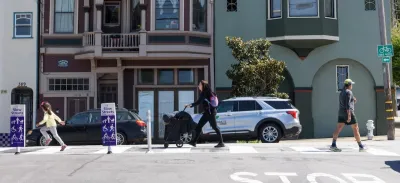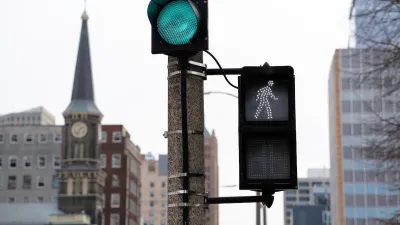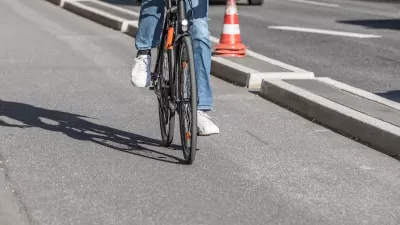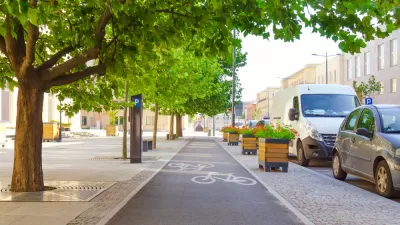Low-cost interventions aimed at slowing traffic are making a major impact on road safety.

San Francisco’s Slow Streets program is dramatically reducing injury collisions, reports Dan Brekke for KQED.
The program, which covers 32 miles and was made permanent in late 2022, is designed to limit traffic and reduce speeds to 15 miles per hour or lower on participating streets. Those segments saw a 61 percent drop in injury crashes, while the rest of the city saw a rise of 6 percent since December 2022.
“Christopher White, executive director of the San Francisco Bicycle Coalition, said in a statement that Slow Streets is a key component to building a citywide network accessible to people of all ages and abilities.” Advocates are calling on the city to speed the expansion of the program to achieve its Vision Zero goals, noting that the success of Slow Streets indicates how small changes can have a major impact.
Slow Streets interventions include low-cost tools such as flexible posts, paint, and signs. “It’s such an insignificant cost in terms of materials and labor, but yet it has had such a significant impact on public safety,” said data analyst Stephen Braitsch. Traffic safety advocates suggest adding other interventions such as signal timing and reducing the number of lanes on dangerous streets.
FULL STORY: SF Is Struggling to Reduce Traffic Deaths. Slow Streets Could Be an Answer

Alabama: Trump Terminates Settlements for Black Communities Harmed By Raw Sewage
Trump deemed the landmark civil rights agreement “illegal DEI and environmental justice policy.”

Planetizen Federal Action Tracker
A weekly monitor of how Trump’s orders and actions are impacting planners and planning in America.

The 120 Year Old Tiny Home Villages That Sheltered San Francisco’s Earthquake Refugees
More than a century ago, San Francisco mobilized to house thousands of residents displaced by the 1906 earthquake. Could their strategy offer a model for the present?

LA’s Tree Emergency Goes Beyond Vandalism
After a vandal destroyed dozens of downtown LA trees, Mayor Karen Bass vowed to replace them. Days later, she slashed the city’s tree budget.

Sacramento Leads Nation With Bus-Mounted Bike Lane Enforcement Cameras
The city is the first to use its bus-mounted traffic enforcement system to cite drivers who park or drive in bike lanes.

Seattle Voters Approve Social Housing Referendum
Voters approved a corporate tax to fund the city’s housing authority despite an opposition campaign funded by Amazon and Microsoft.
Urban Design for Planners 1: Software Tools
This six-course series explores essential urban design concepts using open source software and equips planners with the tools they need to participate fully in the urban design process.
Planning for Universal Design
Learn the tools for implementing Universal Design in planning regulations.
Ada County Highway District
Clanton & Associates, Inc.
Jessamine County Fiscal Court
Institute for Housing and Urban Development Studies (IHS)
City of Grandview
Harvard GSD Executive Education
Toledo-Lucas County Plan Commissions
Salt Lake City
NYU Wagner Graduate School of Public Service





























